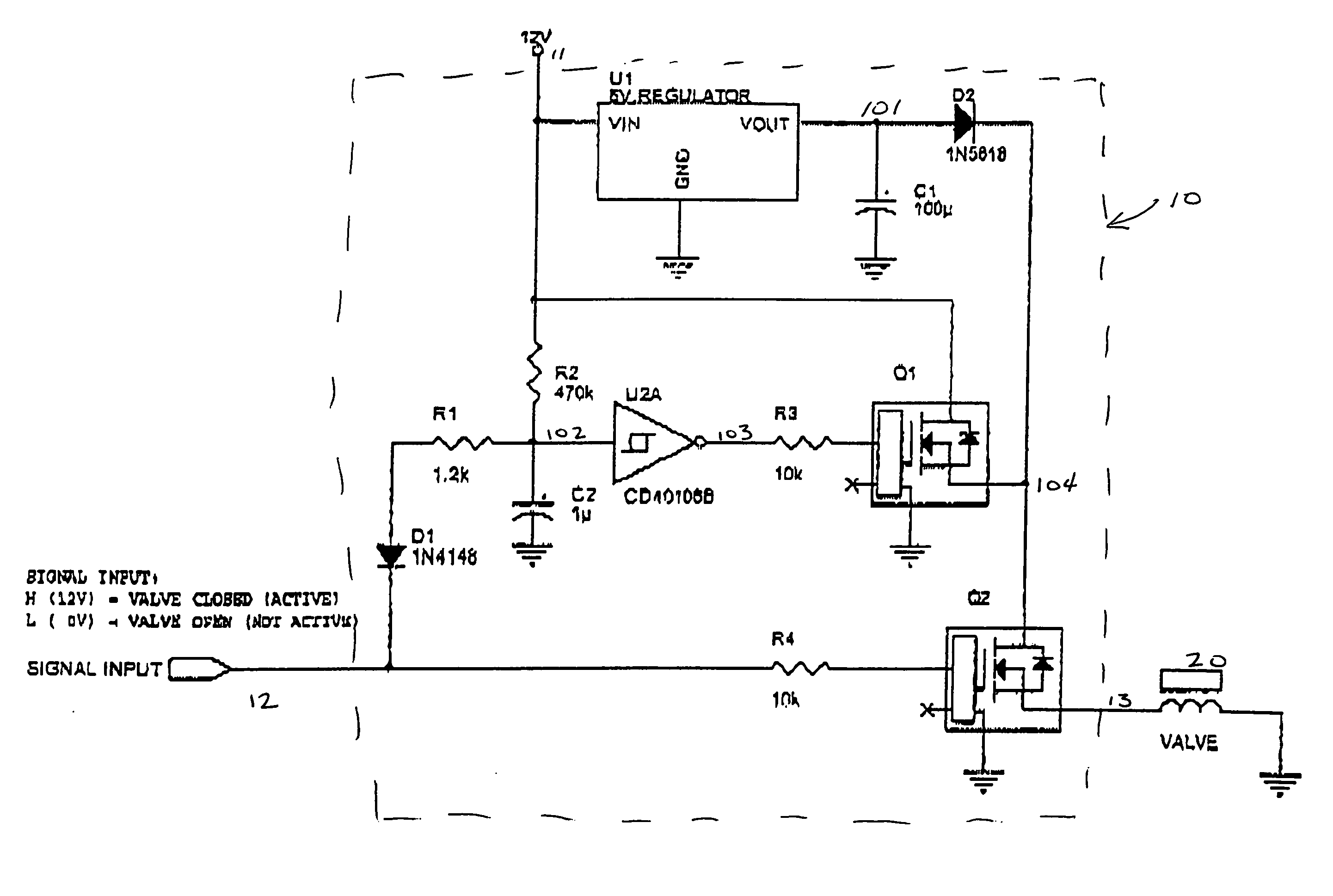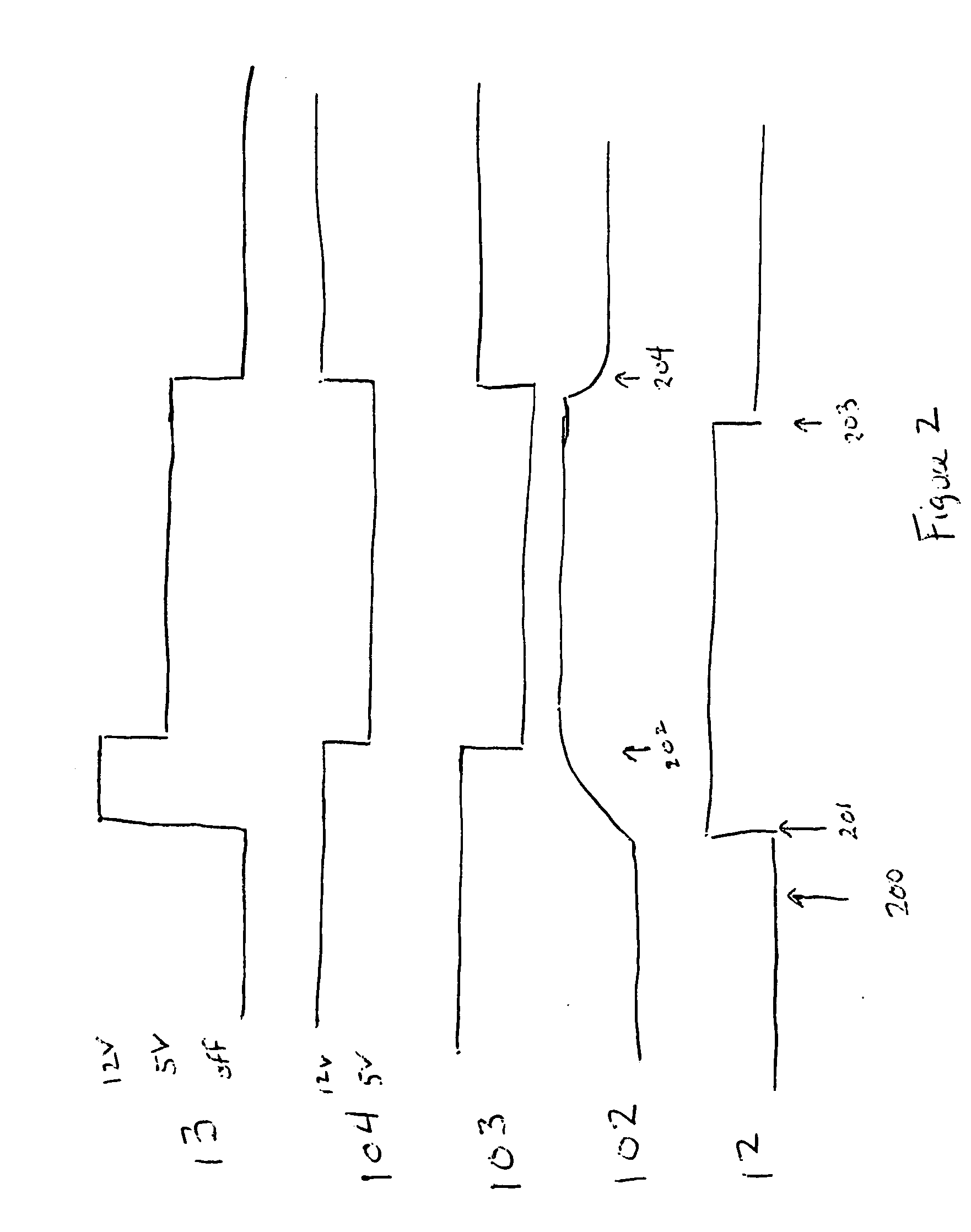Low power solenoid driver circuit
a solenoid and low-power technology, applied in the field of low-power solenoid driver circuits, can solve the problems of power consumption or speed, jittery timing of solenoid, uncertainty or jitter, etc., and achieve the effect of reducing power consumption, minimizing timing jitter, and accurate timing
- Summary
- Abstract
- Description
- Claims
- Application Information
AI Technical Summary
Benefits of technology
Problems solved by technology
Method used
Image
Examples
Embodiment Construction
[0017]FIG. 1 is a schematic diagram of the preferred embodiment of the present invention. Variations of this circuit are possible without deviating from the spirit of the invention. The preferred embodiment of the circuit has a power input 11, a signal input 12 and an output signal 13.
[0018] The power input, 11, supplies voltage to the several components in the circuit 10 and to the solenoid 20. Any suitable power source (not shown) can be used to supply the requisite power input to the circuit 10. The amount of voltage supplied also is not particularly limited, and can include 24, 12 and 5 volts and is preferably 12 volts.
[0019] The circuit has a single input signal 12 that is used to enable the solenoid 20. In this embodiment, the circuit 10 allows voltage to be passed to the solenoid 20 via the output signal 13 when the enable signal 12 is a logic high. Alternatively, those skilled in the art will appreciate that the circuit can be designed such that the solenoid 20 is powered ...
PUM
| Property | Measurement | Unit |
|---|---|---|
| voltage | aaaaa | aaaaa |
| voltage | aaaaa | aaaaa |
| voltage | aaaaa | aaaaa |
Abstract
Description
Claims
Application Information
 Login to View More
Login to View More - R&D
- Intellectual Property
- Life Sciences
- Materials
- Tech Scout
- Unparalleled Data Quality
- Higher Quality Content
- 60% Fewer Hallucinations
Browse by: Latest US Patents, China's latest patents, Technical Efficacy Thesaurus, Application Domain, Technology Topic, Popular Technical Reports.
© 2025 PatSnap. All rights reserved.Legal|Privacy policy|Modern Slavery Act Transparency Statement|Sitemap|About US| Contact US: help@patsnap.com



